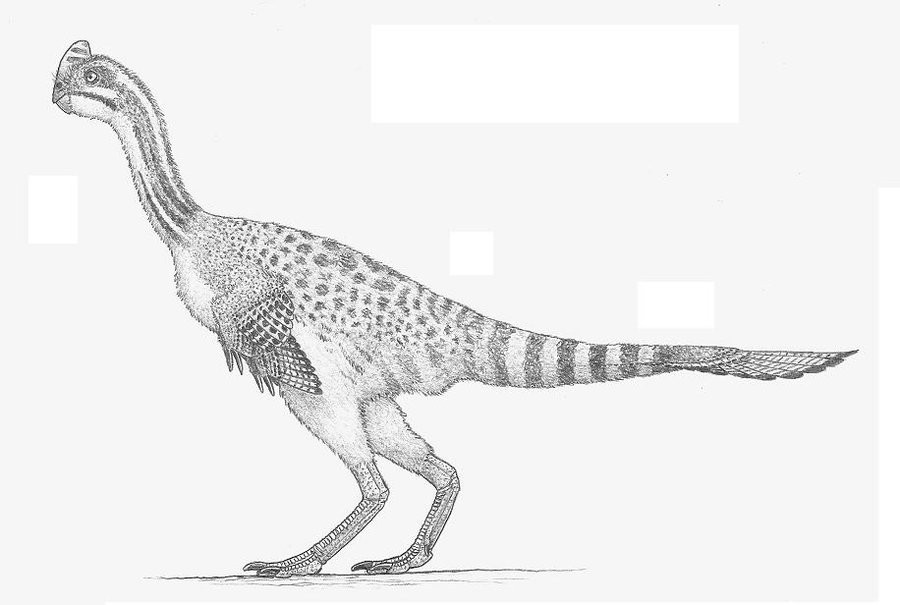Banji
Reconstruction of the skull
- China, Jiangxi ( Nanxiong Formation)
- Banji long
Banji was a theropod dinosaur from the group of Oviraptorosauria, who lived in the Upper Cretaceous of China. This genus is known by a single, nearly complete skull, probably from the Nanxiong formation originates in the Chinese province of Jiangxi, the exact location is not known.
Banji was scientifically described with the only kind Banji long, 2010. He pointed to other Oviraptoriden on a deep, edentulous jaw, which was formed into a beak. In contrast to related genera of bony skull crest showed a step- like end. Presumably it was a plant or omnivores. Within the Oviraptorosauria Banji is counted among the Oviraptoridae.
Features
The skull found is small at 6.5 cm in length. Since some skull bones have not yet fused, it is assumed that it was a cub.
Banji showed the typical Oviraptoriden short and deep skull, with wide upstairs nostrils ( nar ), a small Antorbitalgrube ( the skull sink before the eyes ( afe ) ), a large infra pace Ralf Rochester ( a skull window behind the eyes ( itf ) ) and a large, bony skull crest. Unlike other Oviraptoriden the cranial crest mainly by the premaxillary bone ( premaxilla (pm) ) is formed and transmitted via the eye sockets in one stage. The crest shows on each side two elongated pits ( gpn ) and numerous striations. The nostrils were extremely extended and followed the curvature of the ridge to the vicinity of the orbits ( or). Other unique features ( autapomorphies ) are a deep valley on the wing bone ( pterygoid ), various elongated pits at Dental ( a lower jaw bone (d)), as well as tubercle structures ( saf ts) dar. on Surangulare
System
Various primitive features of the palate and jaw bones show that Banji occupied a basal position within the Oviraptoridae. Some of these features might be basal ontogenetic nature, so be due to that it is the individual found to be a young animal. The individual development of Oviraptoriden is currently known, however inadequately. An analysis of the descriptors, which involves all, even potentially ontogenetic -related traits with, revealed that Banji after gigantoraptor the basalste representative was the Oviraptoridae.
Fund and naming
The researchers acquired the skull from an amateur fossil collector, which stated as the locality Hongcheng Basin near Ganzhou in Jiangxi Province of China, but no detailed information made to the locality. Probably, however, the skull is from the Nanxiong lineup, making it about 65 million years old ( Maastrichtian ). The skull ( holotype, IVPP V 16896 copy number ) is almost completely preserved, including the jawbone, and is now kept in the Institute of Vertebrate Paleontology and Paleoanthropology in Beijing. A likewise derived from the embryonic skeleton of a Oviraptoriden Hongcheng Basin ( Cheng et al, 2008. ) Could also belong to Banji - because in this Fund but no skull bones are preserved, can only bring further discoveries clarity.
The name Banji means something like "striped comb" (Chinese ban - "stripes", ji - "comb" ) and refers to the striations of the cranial crest of this genus. The species name long also comes from the Chinese word meaning " dragon ".
Swell
- Xing Xu, Feng Lu Han: A new oviraptorid dinosaur ( Theropoda: Oviraptorosauria ) from the Upper Cretaceous of China. In: Vertebrata PalAsiatica. 48, No. 1, 2010 ISSN 1000-3118, pp. 11-18.










